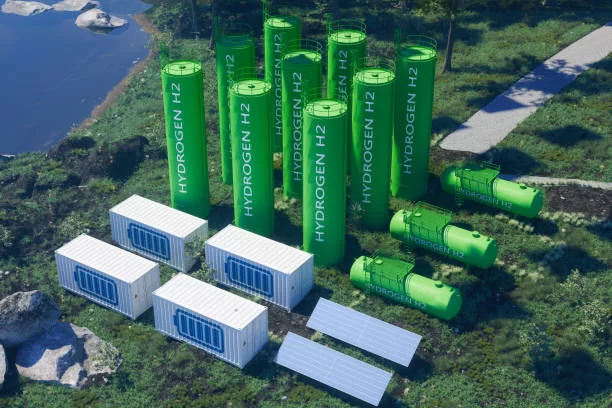The Development, Market Demand and Technological Impact of Electric Storage Units
Electric storage units have various manifestations. Common ones include battery packs, energy storage power stations, home energy storage systems, supercapacitors, flywheel energy storage, flow batteries, and compressed air energy storage.

Battery packs are composed of multiple battery cells connected in series or parallel and are commonly found in electric vehicles, electric bicycles, and mobile devices. The lithium-ion battery packs used in Tesla vehicles are typical examples. Energy storage power stations, as large-scale electric storage facilities, are usually connected to the power grid and are used to balance power supply and demand and stabilize grid frequency and voltage. Some large lithium-ion battery energy storage power stations play an important role. Home energy storage systems can provide power storage and backup power for households and can also be combined with solar power generation systems. Supercapacitors have the characteristics of rapid charging and discharging and are often used in occasions that require high power output in a short period of time, such as the starting assistance of electric buses. Flywheel energy storage stores energy through a rotating flywheel. Flow batteries, such as vanadium flow batteries, have their electrolytes flowing inside the battery and have a long service life and scalability. Compressed air energy storage compresses and stores air and releases it to drive turbines for power generation when needed.
These different forms of energy storage units have their own characteristics in terms of energy density, power density, charging and discharging speed, lifespan, and cost, and are thus suitable for different application scenarios and demands.
At present, the market demand for electric storage units shows a growth trend and has extensive applications and demands in different fields. In the consumer electronics field, products such as mobile phones, computers, and tablet computers have a large demand for memory chips. Although the shipment volume of the mobile phone market is expected to decline slightly, the production and use of consumer electronics as a whole are still relatively stable, continuously driving the demand for energy storage units. In the field of communications, with the development of telecommunications services, the demand for data storage and processing is also increasing. In terms of automotive electronics, the booming production and sales of new energy vehicles have continuously increased the degree of automotive electronics. The intelligentization and electrification of automobiles have driven the growth of the automotive electronics market, thereby driving the demand for energy storage units. In particular, some high-performance memories, such as HBM, have a strong demand in fields such as AI servers.
In terms of market size, the global memory chip market exceeded 150 billion US dollars in 2022 and is expected to further increase to 165.8 billion US dollars in 2023; the sales of memory chips in the domestic market in China reached 593.8 billion yuan in 2022 and is expected to approach 650 billion yuan in 2023.
At the same time, with the continuous advancement of technology and the emergence of new applications, such as the rapid development of fields such as artificial intelligence, the Internet of Things, and big data, the requirements for data storage and processing are getting higher and higher, further stimulating the market demand for electric storage units. The development of some emerging technologies, such as 3D DRAM, is also expected to bring new growth momentum to the memory chip market.
However, market demand is affected by many factors, such as the economic situation, technological development, and industry competition. The actual market demand situation may fluctuate. But in general, energy storage units still have great market potential and development space in the future.
In addition, the development of several technologies may have a significant impact on the market for energy storage units. The rapid progress of artificial intelligence technology has led to a continuous increase in the demand for data processing and storage. It can also be used to optimize the performance and efficiency of storage systems. Edge computing technology can push computing and data storage closer to the data source, promoting the demand for electric storage units in edge devices. The development of the Internet of Things has brought billions of connected devices that require local storage for processing and caching data, thereby promoting the growth of the market for energy storage units. The high speed, low latency, and large-capacity connection of 5G technology support more real-time data processing and storage applications, placing higher requirements on the speed and capacity of electric storage units. New storage technologies, such as phase-change memory, magnetic random access memory, resistive random access memory, and ferroelectric memory, have higher performance, lower power consumption, and better reliability. Their development may gradually replace traditional storage technologies and have a significant impact on the market for energy storage units.
Advances in semiconductor technology, such as smaller process nodes and 3D packaging technology, can increase the density and performance of memory chips and reduce costs, helping to meet the growing storage demand and promoting the development of the market for electric storage units.
The above are only possible influencing factors, and the actual situation will be affected by the combined effects of various factors such as market competition, technological maturity, and cost.
To sum up, the development of energy storage units has broad prospects but also faces many challenges and opportunities. Its future development deserves continuous attention.
